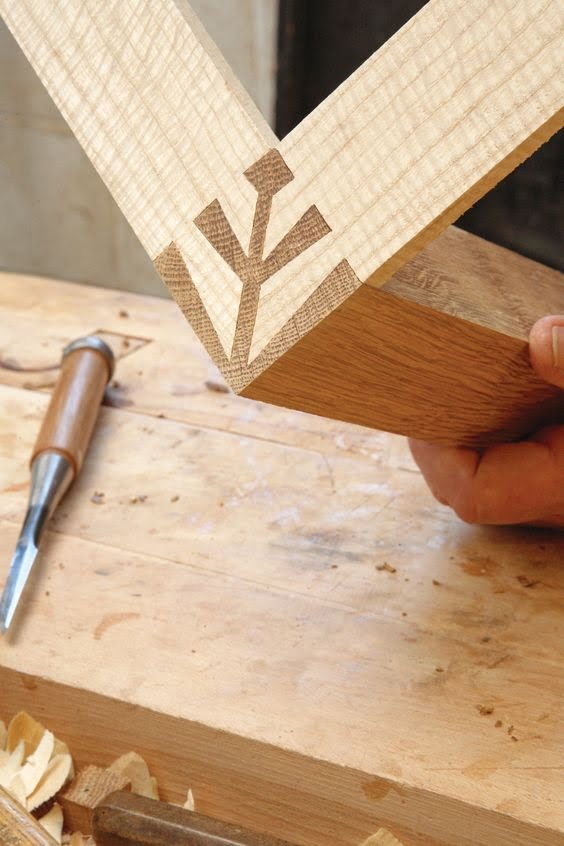Introduction
Woodworking is arguably one of the oldest human activities and has been around for centuries. Woodworking rotary tools, sometimes referred to as ‘Rotary tools’ or ‘Multi-tools’, have been used for centuries in carpentry and cabinet making to shape and carve wooden objects. They are usually powered by electricity, steam or air pressure. Rotary tools can be used for cutting, drilling, grinding, sanding and polishing. In the traditional woodworking workshop, such rotary tools were essential and most crafters had several of them in their possession when mastering their trade.
The earliest versions of woodworking rotary tools resembled simple circular saws with a rotating blade or bit that could be spun by hand or with an external source of power such as an electric motor or a steam engine. As technology advanced, these basic devices evolved into more specialized machines with greater power and versatility enabling craftsmen to create complex shapes and intricate designs on wood pieces such as furniture or musical instruments. Today’s modern rotary tools come in a wide variety of sizes, styles and configurations providing users with the ability to perform highly precise operations on a variety of materials including wood, plastics and metals at speeds unimaginable just a few years ago. Whether working on small scale projects such as dovetailing joints for furniture making or large industrial projects involving massive steel beams for construction purposes; rotary tooling makes short work out out of any job ” saving time, money and effort along the way.
Materials and Accessories
For woodworking rotary tools, there are a variety of blades and cutting tools available. There are those specifically designed for routing along the grain. These include straight router bits, round overs, flush trimmers, and veining routers. Then there are those made to cut across the grain. These range from rabbets to slot cutters and hinge mortisers, as well as standard end mills. Besides cutting implements, there are also a variety of accessories available for woodworking applications such as sanding drums and disks, polishing wheels ranging from coarse to fine grits, buffing and burr attachments, straight drills (countersinks) for drilling pilot holes in metal or wood before using a larger bit for countersinking screws in metal or plastic materials. Specialty modules like dovetail jigs can also be used with rotary tools for greater production accuracy when making more intricate joints such as drawers or cabinetry projects.
Safety Precautions
Woodworking rotary tools can be hazardous if not used with proper precautions. To minimize the risk of accidents and injuries, be sure to observe the following safety guidelines:
1. Wear safety goggles when operating the tool. Flying particles or chips from a spinning bit can cause severe damage to eyes.
2. Wear hearing protection when working with high-speed tools to avoid exposure to loud noise levels.
3. Make sure you are properly grounded by using a three prong plug into a grounded outlet as this will reduce the risk of electrocution in case of contact with water or other conductive materials near the power source.
4. Only use sharp bits and blades for better control and accuracy of your work ” dull cutting bits can cause danger and injury as well as poor cutting results due to the increased pressure needed for cutting with a dull bit.
5. Do not wear loose clothing or jewelry that can be caught in the moving parts while operating the tool ” always tie back long hair so it doesn’t get caught in any rotating parts either.
6. Always use clamps and jigs when feasible to hold your work piece securely in place and/or house it on a stable work surface instead of holding it freehand while working with a rotary tool – even experienced woodworking professionals can lose control of their tools due to slip ups when trying to handle materials freehand with these spinning tools.
7. Be sure to disconnect your tool from its power source before making any adjustments, changing bits, or installing accessories such as sanding drums or rotary grinders, etc., as making changes on an active motor could cause significant injury should it kick start unexpectedly during adjustment processes
8. Have basic first aid knowledge on hand in case a minor injury is sustained; this way you can address minor issues quickly without having to wait for medical assistance if needed
Different Types & Uses
A woodworking rotary tool is a versatile piece of equipment that can perform a number of tasks in the process of creating wood crafts and joinery. The rotary tool consists of interchangeable parts, such as an attachment head, accessories and cutting tools. Depending on the task at hand, different parts can be used to accomplish various tasks including cutting, drilling, grinding and polishing.
Attachment heads are used for sanding-related duties and come in various sizes with replaceable discs that can be used on a variety of materials. Accessories like collets, wrenches and couplers can change out any type of attachment head allowing for quick drill bit changing or specialty attachments.
Cutting tools such as router bits and saw blades are especially useful when cutting curves into corners or other intricate patterns. Some models even have reciprocating saw blades which allow for large radius cuts easily achieved on thicker woods or plastics. Disc cutters are another type of cutting tool to consider for smoother lines and greater detail accuracy when cutting small curved patterns. They make ideal tools for contouring stock components quickly with precision accuracy at an affordable cost.
Grinding , typically done with abrasive stone grinding wheels , gives the desired shape to piece after careful measurement has taken place . Heat generated when removing extra material is usually minimal but enough to soften metals and vaporize plastic easily which makes grinders invaluable when finishing certain components . Polishing inserts can also be fitted into grinders to give improved finish quality over just using grinding wheels alone .
No matter its size, a woodworking rotary tool provides excellent results at less time that it would take without it due to its versatility in performing all sorts of crafting inside carpentry projects with precision accuracy!
How to Use
When to Use a Woodworking Rotary Tool – A woodworking rotary tool can be used for a variety of tasks such as sanding, engraving, cutting, grinding and polishing. They are helpful for intricate and detailed work that requires fine motor control and accuracy. With their quick speeds and easily maneuverable shape, they allow you to make faster progress on detailed pieces.
Positioning – To properly position your woodworking rotary tool while in use, make sure you have a good grip on the body of the tool and hold it securely near its center of gravity. You should have a strong base to help stabilize your movements as you work with it. If the grip is too loose or too far from the center of gravity, then your tool will vibrate too much, making accuracy more difficult.
Technique – When using a woodworking rotary tool, begin by working at low speeds until you feel comfortable with the process before gradually increasing the speed to achieve desired results. It’s important to use steady pressure when engaging the dials or levers on the tool’s handle”don’t let them slip out of control! Additionally, using feather-light strokes can help minimize any accidental gouging or tearing of your project materials.
Safety Tips – Whenever using tools like a woodworking rotary tool make sure to wear protective gear such as eye protection and gloves as necessary. Additionally, maintain cleanliness by getting rid of any sawdust quickly”this will help reduce any potential hazards. Make sure not to leave your machine running while unattended; this could cause serious damage if anything were to go wrong while you’re not there. Finally, ensure that all settings are properly locked before turning on or off so that accidental operation cannot occur.
How to Choose a Woodworking Rotary Tool
A woodworking rotary tool is an essential tool in any woodworker’s toolbox. Not just used for wood carving, sanding and polishing, the rotary tool can also be used to drill holes, etch intricate designs on material such as glass or stone, and even act as a miniature router. Its versatility makes it one of the most flexible tools for working with a variety of materials. However, when it comes to choosing the right model, this is not always so straightforward ” there are several factors to consider when selecting the best option for your project needs and budget:
Power ” Look for a model that meets your power requirements. For example if you want to work with tougher materials, then opt for a more powerful motor; if you’re mainly using it for lighter jobs such as sanding and drilling, then you can go with a less powerful version.
Speed ” The higher the RPM (rotations per minute) range of your unit, the more versatile it will be; some models have variable speed settings which can come in handy depending on what tasks you will be executing with it.
Cost ” Your budget ultimately helps determine which model you will get; fortunately, prices vary significantly by brand and range from cheap basic models to top-of-the-line professional variants.
In addition other considerations include: whether the unit runs on battery or electric power; noise levels; safety features like vibration reduction systems; type/amount of accessories included in the package; ergonomics (how comfortable it is to use); warranty coverage and availability of spare parts in case something goes wrong down the line. With all these factors taken into account first time buyers should find it much easier to land on their ideal woodworking rotary tool!
Benefits of Using a Woodworking Rotary Tool
One of the most cost-efficient, time-saving and versatile tools available to woodworkers today is the woodworking rotary tool. This amazing tool has a variety of different accessories and attachments, including sanding discs, grinding wheels, diamond burrs and metal cutters, which allow it to complete cutting and shaping tasks faster than traditional tools like saws and chisels. This significantly reduces project time for both beginner and experienced woodworkers alike.
The economic benefits of using a woodworking rotary tool are equally impressive; with just one single device you have access to an array of tools which can help you work on many different projects without needing to buy multiple specialized tools. Additionally, because these tools are designed with durability in mind, they will often come with minimum maintenance requirements over their lifetime; reducing costs associated with frequent repairs or replacements due to wear.
In addition to its affordability and prolonging the life of existing tools, the woodworking rotary tool also offers convenience due to its light weight design compared to other types of power tools on the market today. The size makes them easy to transport between worksites while their mechanisms allow them to work in tight spaces that wouldn’t be possible with standardized power tools. Furthermore this greater dependence also allows increased precision as they perform far better at repeating cuts accurately than manual hand saws and planes used by most woodworkers in the past.
There’s no doubt that a woodworking rotary tool should be present in every workshop so one can take advantage of all these wonderful benefits this amazing tool provides for any aspiring or professional craftsmen today!
Maintenance
Cleaning: Clean the rotary tool regularly with a soft, wet rag or brush. Be sure to pay extra attention around the cutting blades and other moving parts as dirt and debris accumulation can impede the tool’s performance.
Lubrication: Ensure that all moving parts of the woodworking rotary tool are properly lubricated. Use light machine oil for this process, as it will help reduce friction and keep components from wearing down over time.
Storage: Store the woodworking rotary tool in a dry place away from any sources of extreme heat or cold which can damage its parts and affect its performance. Keep it covered when not in use to keep dirt out and store other accessories nearby, such as extra blades, bits, and power cords.
Conclusion
The woodworking rotary tool provides many benefits to a professional craftsman or the home hobbyist. These tools are small and easy to handle, allowing precision in all projects. Their lightweight design makes them very portable and efficient for use on larger projects. These tools can be used with a variety of materials such as woods, plastics and metals, making them versatile and suitable for any kind of project. The adjustable speed settings make them suitable for both aggressive cutting actions or more delicate operation when needed. The safety features built into the rotary tool make it ideal for novice users as well. With its ease of use and excellent results, the woodworking rotary tool is an invaluable asset to any professional or hobbyist looking to create beautiful quality finished products.

Hi everyone! I’m a woodworker and blogger, and this is my woodworking blog. In my blog, I share tips and tricks for woodworkers of all skill levels, as well as project ideas that you can try yourself.





